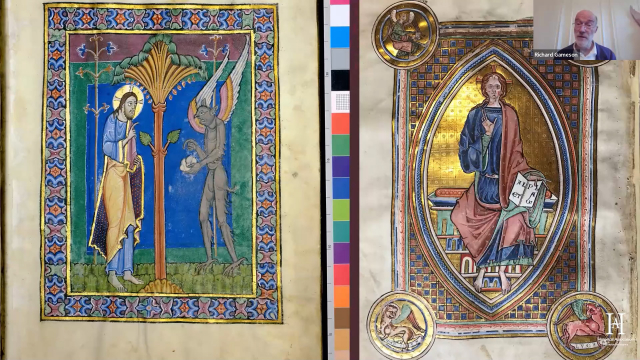Recorded webinar: Medieval manuscripts and modern lasers
By Richard Gameson

What new technology reveals about the materials and methods of scribes and illuminators
Modern, non-invasive scientific techniques have revolutionised knowledge of medieval inks and pigments - from the most exotic, such as lapis lazuli and Egyptian blue, to the most ordinary, indigo and ochres - and of how they were used to create magnificent illuminated manuscripts.
This webinar will outline the techniques in question, explain what they reveal, and will summarise what is now known about the materials and methods of illuminators. It will also explore the real cost and the perceived value of individual pigments, and consider the extent to which these factors influenced when and how they were employed. It offers, in sum, a unique opportunity to look over the shoulders of medieval illuminators at work.
This webinar will outline the techniques in question, explain what they reveal, and will summarise what is now known about the materials and methods of illuminators. It will also explore the real cost and the perceived value of individual pigments, and consider the extent to which these factors influenced when and how they were employed. It offers, in sum, a unique opportunity to look over the shoulders of medieval illuminators at work.
Richard Gameson is Professor of the History of the Book at Durham University. He has published over 100 studies of medieval manuscripts, illumination and libraries. His most recent book, written in collaboration with chemist colleagues, is The Pigments of British Medieval Illuminators: a scientific and cultural study (London, 2023).
This resource is FREE for Primary HA Members.
HA Members can sign in to access this content or you can Join the HA if you are not already a member.

